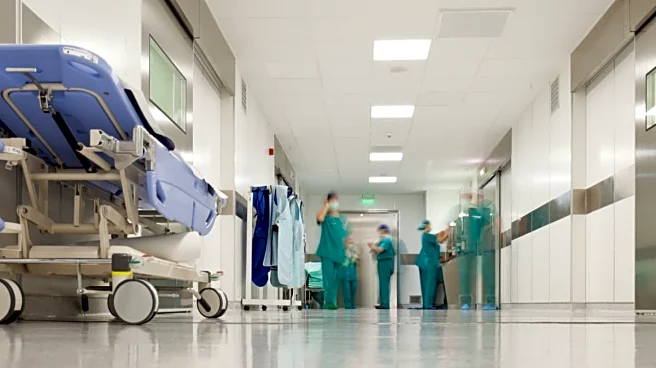Hospital stocks, including Apollo Hospitals, Max Healthcare, Global Health, Narayana Health, Yatharth Hospitals, and Fortis Healthcare, gained up to 5% on Monday, October 6, following the government’s announcement of revised rates under the Central Government Health Services (CGHS) scheme for nearly 2,000 medical procedures. The new rates are set to come into effect from October 13, marking the first major revamp in over a decade.
In intra-day trade on the BSE, Yatharth Hospital & Trauma Care Services, Max Healthcare Institute, Fortis Healthcare, Apollo Hospitals Enterprises, HealthCare Global Enterprises, and Krishna Institute of Medical Sciences advanced between 2% and 5%. In comparison, the BSE Sensex was up 0.18% at 81,354 at 09:20 AM.
CGHS Rate Changes
According
to media reports, the Union Health Ministry has implemented a multi-dimensional rate structure based on four parameters, replacing the earlier uniform rates across OPD and IPD consultations, cities, and wards. Under the new structure:
- Consultations at NABH or NABL-accredited healthcare organisations (HCOs) will follow a standard base rate.
- Non-accredited HCOs will receive rates 15% lower than the base.
- CGHS-empanelled super-speciality hospitals with over 200 beds will charge 15% above the base rate.
All HCOs must submit their acceptance of the revised terms before October 13; failure to comply will require fresh empanelment with CGHS.
ICICI Securities noted that private multi-speciality hospitals such as Narayana Hrudayala, Aster DM, and Healthcare Global, which are NABH or NABL accredited and have capacities in Tier I cities, could see CGHS rates increase by 15% over the base rate, potentially boosting revenue from government scheme patients.
Sector Growth and Capacity Expansion
The hospital sector added around 4,000 beds in FY25 and plans to add 3,400 more in FY26, representing a 23% increase in capacity since FY24. Despite this growth, bed density remains low at approximately 1.6 beds per 1,000 population, particularly outside metro areas, driving continued expansion through private investments and public-private partnerships (PPPs).
India’s medical tourism market also saw significant growth, with global patient volumes up around 33% in CY23, reaching nearly 2 million. International hospital revenue touched approximately $10 billion and is projected to grow to $13 billion by 2026, driven by specialities such as orthopaedics, cardiology, and oncology, according to Shalby’s FY25 annual report.
Opportunities in Tier II and III Cities
The Indian hospital sector is poised for sustained growth in FY26, supported by ongoing capacity addition, digital care models, private investments, and international patient flows. Providers combining scale, technology, and patient-centric infrastructure are well-positioned to benefit from evolving healthcare dynamics.
A significant gap in healthcare infrastructure in Tier II and III cities presents a major opportunity for private providers. Large corporate hospital chains are expanding into these areas through both organic growth and acquisitions, while regional and local players are also gaining traction. This trend is enhancing access to quality healthcare across underserved regions, as highlighted by Fortis Healthcare in its FY25 annual report.
Outlook
Overall, the Indian healthcare industry has maintained robust growth momentum and is poised for continued expansion, underpinned by strong government support, rising private sector investments, technological advancements, and a focus on improving healthcare access and affordability for all segments of the population.


/images/ppid_59c68470-image-175951009077383375.webp)

/images/ppid_a911dc6a-image-175948247801020062.webp)
/images/ppid_59c68470-image-175972530680154718.webp)

/images/ppid_59c68470-image-175970503177299191.webp)
/images/ppid_59c68470-image-175973021811129914.webp)
/images/ppid_59c68470-image-175973008862941295.webp)
/images/ppid_59c68470-image-175972517547513225.webp)

/images/ppid_59c68470-image-175972527446925544.webp)
/images/ppid_59c68470-image-175973521476991350.webp)
/images/ppid_59c68470-image-175972762144381859.webp)